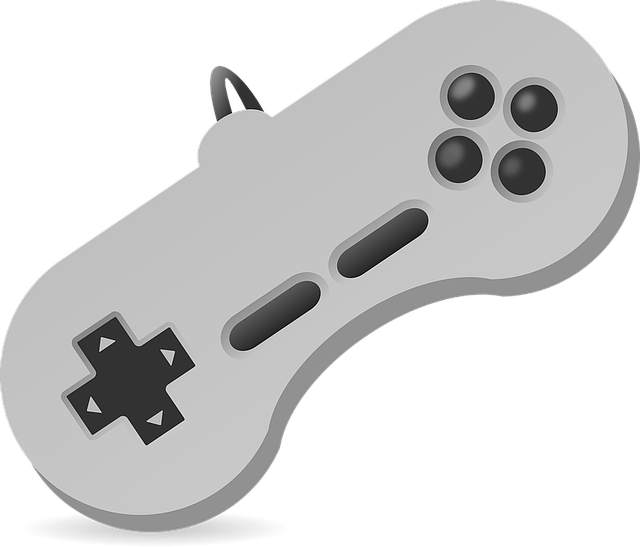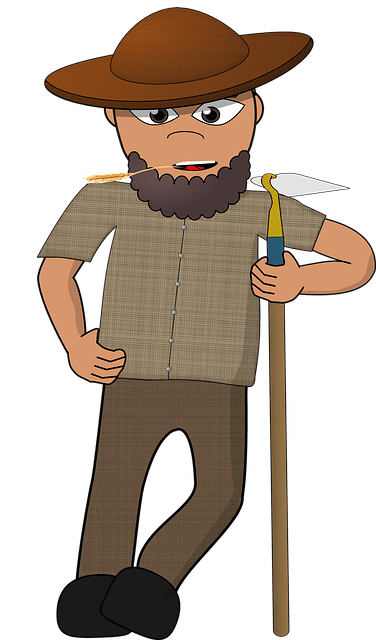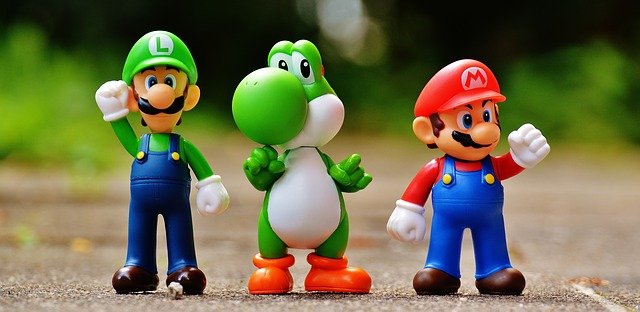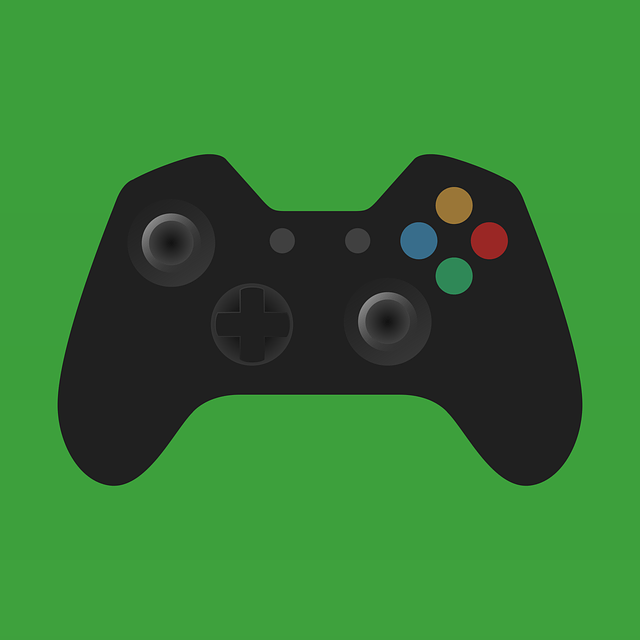Fresh from a drag performance featuring a gender-swapped Mario and Princess Peach chasing each other around on stage, after watching a burlesque performer disrobe to the Tetris theme, I am standing at the bar waiting for a drink, surrounded by people in fabulous outfits. Famous drag queen Asstina Mandella is here in a stunning dress; I am in a purple bisexual-colours suit and I still feel somewhat underdressed for the occasion. I am not used to this at video games events – back in the 00s, it was mostly men in black T-shirts with logos on them, and I was one of about three women in the room. But this is the first in-person Gayming awards, an event that celebrates queer representation in video games, and the huge and ever-growing queer community that plays them.
This might not be what some people would think of as the gaming audience, but the fact is that just about everybody plays games now – two-thirds of all Americans, to pluck just one stat – and of course, queer people have always been part of that community. If anything, queer people are overrepresented in the gaming population. Fully 21% of all the people working in the games industry identify as LGBTQ+, according to a recent survey by sector champion Ukie. Until quite recently, though, this was not reflected in games themselves, whose makers and marketers seemed resolutely committed to making games starring either white heterosexual males shooting at things, or anthropomorphic animals. When I was growing up in the 90s, even female representation in games was dismal, let alone queer representation.
But things are changing, and gaming is mirroring increased LGBTQ+ visibility in TV and film. A series like Mae Martin’s Feel Good, about a formerly straight-presenting bi woman in her first relationship with a non-binary queer person, did not exist in 1999; neither did a game like Life is Strange: True Colors, a small-town mystery about a bisexual psychic, which picked up three accolades at the Gayming awards.
Bisexual psychic … Life is Strange: True Colors. Photograph: Square Enix
“We’re seeing games feature LGBTQIA+ characters, queer coming out stories, and queer relationships,” says Stephanie DeBiase, gaming and future tech coordinator at the youth-focused It Gets Better Project. “More and more, games are giving players more options to create characters that reflect them, removing binary gender selection, building character customisation that allows for subversive and nuanced gender expression, including non-binary pronoun options, and more. Games that offer the opportunity for romance are starting to allow players LGBTQIA+ romance options. This representation is not only making games more enjoyable for LGBTQIA+ players, but also helping gamers explore their queerness in safe, virtual spaces.”
It is an art form that speaks to a lot of different people and backgrounds, and the more we include all those people, the better it is
Life-simulation game The Sims, first released in 2000 and now on its fourth iteration, has been a standard-bearer of queer representation in video games – though as reported by the New Yorker in 2014, at first this wasn’t fully intentional. The decision was made during the original Sims’ development in the late 90s to remove same-sex romantic interactions between characters, but they were reinstated by a programmer named Patrick J Barrett III – himself a gay man – who was working from an old design document that made no mention of that decision. After two female Sims went off-script at a wedding during a live demo of the game in 1999 and started passionately making out in front of a roomful of journalists, developers at Maxis were waiting for the suits at publisher EA to demand a change – but it never happened, and so The Sims became one of the first games to portray homosexuality and bisexuality.
These days, the developers working on The Sims 4 at Maxis are much more deliberately queer- and trans-inclusive, catering to one of the most diverse player communities in video games. Since May, Sims players have been able to choose their characters’ pronouns (though the gender binary is baked into the game’s eight-year-old code, so there are some limitations to this feature). An update this week also lets you intentionally define a Sim’s sexual orientation – although until now, all Sims were cheerful bisexuals who have been up for relationships with other Sims no matter what their gender, so as one player pointed out on Twitter, what’s actually happening is that the game is finally introducing straight people.
“I’m an openly gay man working in the games industry, so for me I have a vested interest in greater inclusion not just in the games we play, but in those who make games,” says John Faciane, associate producer at Maxis, the Sims’ developer. “It is an art form that speaks to a lot of different people and backgrounds, and the more we include all those people, the better it is … A big reason that I felt comfortable to come out when I did, even though I have a wonderful, supportive, loving family, was seeing representation of gay men within games – knowing that there were other people out there like me. Seeing people in the media and in games living their truths helped inspire me to be more comfortable with who I am.”
Inclusive … The Sims 4.
John came out relatively late – in his late 20s – as did Phill Ring, executive producer at Maxis, who feels that games now play a part in today’s teenagers’ journeys with their sexuality and gender expression. “The next generation can see this representation, they don’t have to have the same experiences that others may have had growing up. [Decades ago] there wasn’t a lot that you could see in the gaming space or even media in general that felt like that was your identity. Now you can see more of it, and it is really important. I’m hopeful that the industry can start to take on this challenge.”
Aside from representation within games themselves, the way that communities gather around games has also been a driving factor in changing the state of play: queer gamers – or gaymers, as many playfully identify – are more visible too. Discord chat servers, Twitch streaming and of course social media have brought people together and created sub-communities where queer players find each other. This year’s TwitchCon featured a drag showcase, alongside the usual competitive gaming tournaments.
“Every year it gets bigger and better,” says 34-year-old Ben Austwick, who streams on Twitch under the name BiggusBennus. “Weirdly, when I started streaming, I never advertised that I was gay, nor mentioned it on stream … I quickly realised this was foolish. I’m aware that by streaming you have a lot of influence over those who watch you. By being someone who is an out and proud member of the LGBTQIA+ community, you’re providing a place for other LGBTQIA+ members to be themselves, whether they can at home or not. I wish I’d had something like this growing up.”
As Ben points out, though, gaming’s general reputation for toxicity is not entirely unjustified, and outside explicitly LGBTQ+-friendly spaces there is still a lot of homophobia around. “I don’t believe it’s an overstatement to say that the gaming sector has a huge problem with homophobia, transphobia and other forms of bigotry, but it is being tackled at all stages by publishers and developers who don’t want their games tainted by it, which is heartening to see. It’s sad that we have to make our own groups, clans or forums to make sure that we play while feeling safe and comfortable to be who we are, but it’s becoming increasingly common to allow us to do this and some publishers actually promote it with special LGBTQIA+ events.”
‘I’m aware you have a lot of influence’ … Twitch streamer BiggusBennus. Photograph: Courtesy Benjamin Austwick
DeBiase reckons that such publisher-led celebrations of queer players through, for instance, in-game pride events sends a powerful message of support and welcome. “LGBTQIA+ gamers want to see themselves in the games that they play … I’ve played games from a young age, and I often found myself in a heteronormative world, controlling a character that did not reflect me,” she says. “Gaming for me has always been about endless possibilities, about exploring worlds different from my own, so to see the same social constructs play out in the gaming space disallowed that desire for escape.
“I found myself turning to games like The Sims because you had control over the majority of the world. I could create a character I identified with, explore new possibilities through self expression, choose which characters I wanted to develop relationships with, and of course, express myself in ways that might not have been possible or safe for me to do so in the real world. Now, I find myself only drawn to games that give you those options to explore freely.”
When I was going through adolescence, my queerness felt like something best kept to myself. Opportunities to explore who I was came later on, as a student, when I started spending time in real-life queer spaces (I would still highly recommend a summer in Berlin to any confused teenager). Today’s queer teens and tweens get to see people like them in places I never did – on TV, online, and in video games, a medium I’ve loved since I was a child, but whose fan community never felt very welcoming to queer women like me. Looking around the room at the Gayming awards, I’m surrounded by people whose queerness and love for video games are both important parts of who they are – and nowadays, they are no longer at odds.



